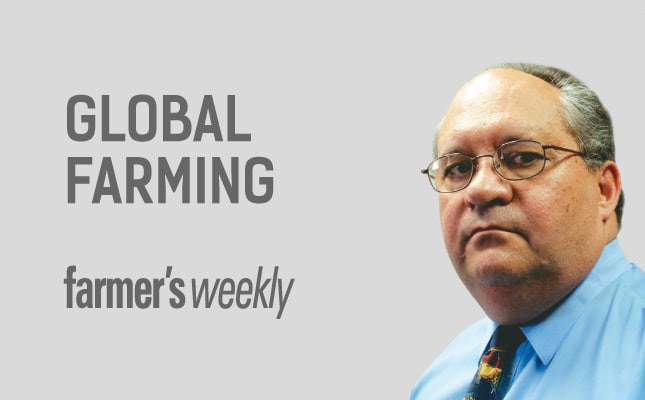
Internationally, agricultural commodity prices have decreased sharply since 2013. A further decrease in global commodity prices is expected as the two major drivers of growing demand in the past decade – Chinese economic growth and the development of biofuel industries – are slowing down.
Crop prices are expected to remain under pressure from lower demand; a gradual recovery is expected only from 2020 as feed demand for grain increases. A lower cost structure caused by the decrease in grain prices and weaker demand growth has resulted in a slowdown in meat prices from 2014.
Prices are expected to stabilise well below recent peaks over the next decade.
Strong production growth following sharp increases in producer prices in 2013/2014 and a decrease in demand caused by slower economic growth globally have resulted in lower global dairy product prices. Prices are expected to bottom out in 2016 and start increasing from 2017.
According to the Bureau for Food and Agricultural Policy (BFAP), SA’s agriculture sector performed well over the past decade, with an increase of more than 15% in real gross value since 2005. Gross value growth was 30% in 2014, but has decreased rapidly as the sector faced two seasons of extreme drought.
The weaker rand has isolated SA agriculture against the sharp decrease in global prices. The rand devalued 48% in two years. This, plus the effect of the drought on summer grain yields, has resulted in very high grain prices in 2016 in SA.
Assuming stable weather conditions, SA will probably become a net exporter of maize again in 2017. This means lower maize prices as these move to export parity level in a surplus year.
Shift to oilseed
The area planted to soya is expected to grow by about 5%/year due to favourable prices and the increase in processing capacity.
The increased supply of oilcake will greatly benefit the local livestock industry. In the winter-grain areas, a shift from grains to oilseed production is also expected due to improved canola varieties and the proven benefits of canola as a rotational crop.
The area under barley in the Southern Cape is also expected to grow at the expense of the area under wheat.
Meat and dairy consumption grew at a fast rate over the past decade. This is expected to slow down during the next decade, as the rate of movement of consumers into higher lifestyle groups has slowed down somewhat.
The supply of livestock products will also decrease as the real effect of the 2015/2016 drought takes effect. It is estimated that the commercial beef cow herd has decreased by 15%; this will probably result in higher prices for beef. Poultry consumption will account for the bulk of the growth in meat consumption, mainly as a result of its greater affordability.
After an initial upwards adjustment in 2016/2017, livestock product prices are expected to grow slowly over the baseline period.
In summary
The annual presentation of BFAP’s baseline projections is an important event on the SA agricultural scene. While the projections give a good indication of what could happen if all other things stay the same (they usually don’t), the real value lies in the mass of other important information collected and published in the reports.
In the latest report, for example, the information on the profile of the SA consumer, food inflation dynamics and on the transformation of agriculture in Africa provides valuable insight for everyone who has an interest in the future of the SA agriculture sector.
In addition, the comparison of production costs between different countries highlights the relative competitiveness of SA and international farmers.
Farmers and their organisations would do well to study these comparisons and address the reasons for higher production costs in some cases.



